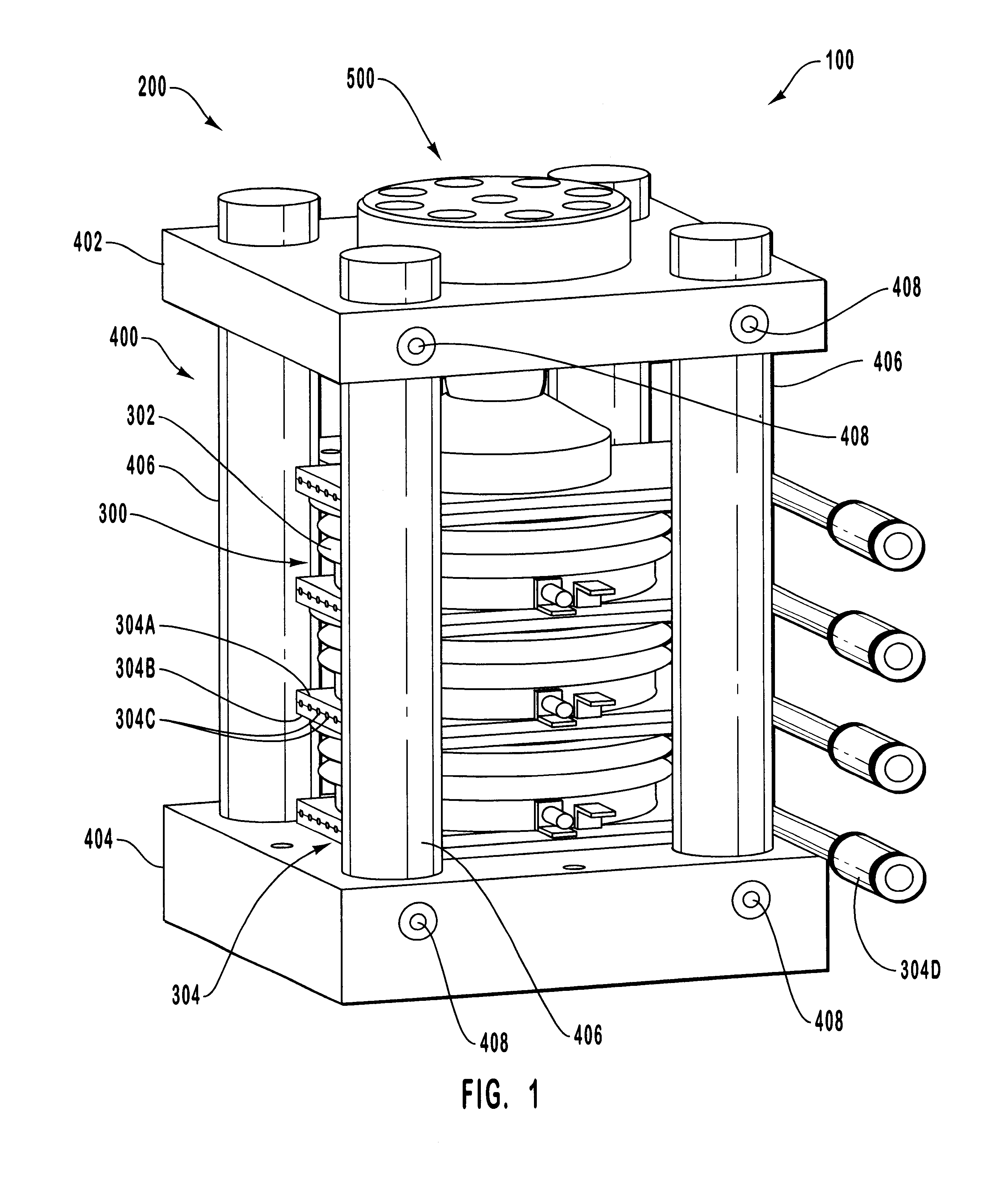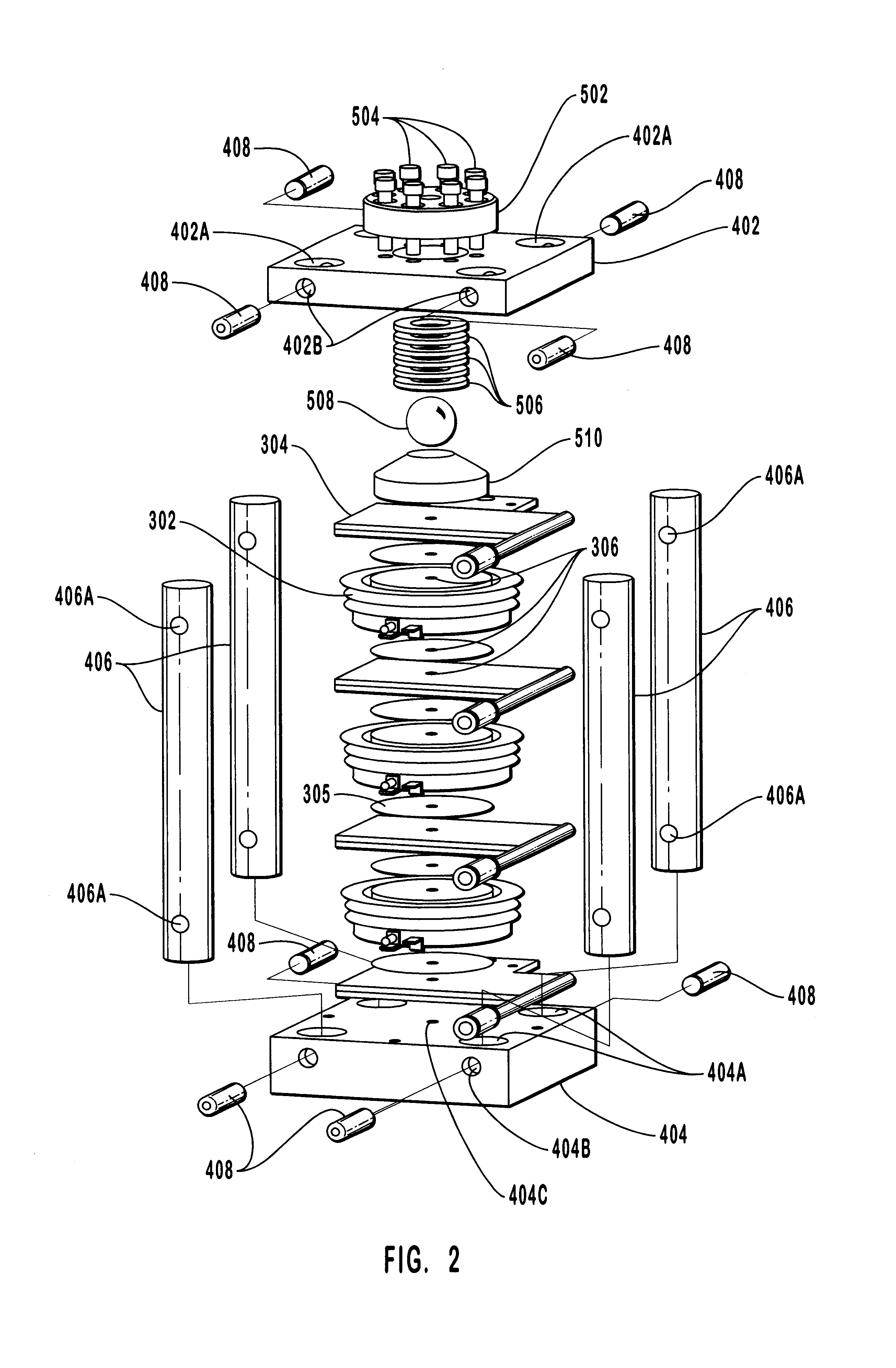Clamping assembly for high-voltage solid state devices
a technology of high-voltage solid-state devices and clamping parts, which is applied in the direction of electrical apparatus construction details, electrical apparatus casings/cabinets/drawers, electrical apparatus contruction details, etc., can solve the problems of not being particularly effective in conducting electricity, not being well suited for use as electrical insulators, and being particularly useful for electrical conduction. , to achieve the effect of convenient ascertaining the magnitude of the compressive force and relatively uniform distribution of the clamping for
- Summary
- Abstract
- Description
- Claims
- Application Information
AI Technical Summary
Benefits of technology
Problems solved by technology
Method used
Image
Examples
Embodiment Construction
Reference will now be made to figures wherein like structures will be provided with like reference designations. It is to be understood that the drawings are diagrammatic and schematic representations of various embodiments of the claimed invention, and are not to be construed as limiting the present claimed invention, nor are the drawings necessarily drawn to scale.
Reference is first made to FIG. 1, wherein a solid state assembly is indicated generally at 100. Solid state assembly 100 includes a clamping assembly 200 and a stack 300. In general, stack 300 is secured in clamping assembly 200 so that clamping, or compressive, forces exerted by clamping assembly 200 can be transmitted to stack 300.
Clamping assembly 200 includes clamp frame 400 and compression assembly 500 mounted in clamp frame 400 and positioned so as to facilitate imposition of compressive forces on stack 300. Clamp frame 400 includes upper clamping plate 402 and lower clamping plate 404 joined by a plurality of con...
PUM
 Login to View More
Login to View More Abstract
Description
Claims
Application Information
 Login to View More
Login to View More - R&D
- Intellectual Property
- Life Sciences
- Materials
- Tech Scout
- Unparalleled Data Quality
- Higher Quality Content
- 60% Fewer Hallucinations
Browse by: Latest US Patents, China's latest patents, Technical Efficacy Thesaurus, Application Domain, Technology Topic, Popular Technical Reports.
© 2025 PatSnap. All rights reserved.Legal|Privacy policy|Modern Slavery Act Transparency Statement|Sitemap|About US| Contact US: help@patsnap.com



